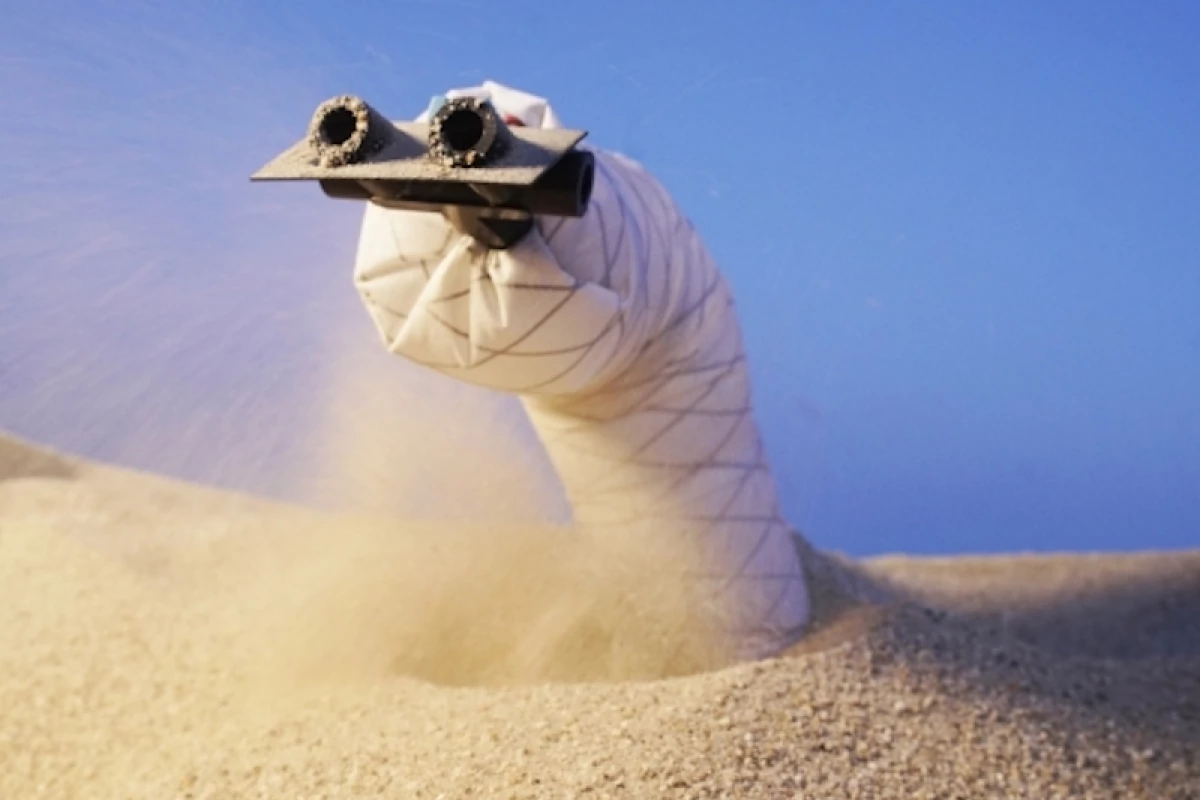Robots are great at exploring land, sea, sky and space, but one environment that’s trickier for them to navigate is through the ground. Now, engineers at UC Santa Barbara (UCSB) and Georgia Tech have developed a snake-like robot that uses a range of methods to burrow through soft sand or soil.
Snakes have long been an inspiration for robots, thanks to their relative simplicity but versatility in movements. As such, they’ve been used to explore environments like sand dunes, seabeds, pipes, defunct nuclear power plants, and even the human body.
Now they’re headed underground. The biggest hurdle here, of course, is that there’s far more resistance, even in granular material like sand and soil, than there is in water or air. But the UCSB and Georgia Tech team developed a robot that can tackle that problem in a number of ways.
The new design starts with an existing soft robot that moves by “growing” from its tip, like a vine. Already this helps in it underground adventures – because the tip is the only moving part, friction is far lower than if the entire body was moving. To help it move even easier, a device was attached to the growing tip of the robot that blasts air in front of it, pushing the sand aside to clear a path.
But there’s another challenge: while moving horizontally through the sand, the robot tended to rise until it emerged at the surface. It’s basic physics – there’s far less pressure from the small amount of sand above the robot, than there is in the compacted sand below it.
To counter that, the team made it so the robot also fired air downwards, to reduce that friction. Adding a wedge to the front, inspired by a tunneling sandfish lizard, also helped cut a path.
The end result is a small robot that can move relatively easily through dry, granular media. It can avoid obstacles by twisting and turning like a snake, or diving into the sand and resurfacing on the other side.
The team says that this design could come in handy for things like soil sampling, and installing pipes and cables underground.
The research was published in the journal Science Robotics. The snake robot can be seen in action in the video below.
Source: UCSB




